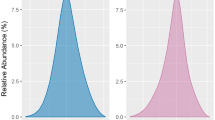Abstract
Objective
An important information source for pharmacotherapy in populations at risk is drug labelling. We compared the recommendations for patients with renal insufficiency included in German drug labellings with evidence from the literature.
Methods
From the 120 drugs with the highest turnover in a large university hospital, all drugs with pharmacokinetics independent of renal function (n=48) and those with substantial accumulation in renal failure (n=28) were identified. For both groups of compounds, pharmacokinetic and pharmacodynamic aspects relevant for dose individualisation in those with renal insufficiency were extracted from the literature and compared with the information given in the German drug labelling.
Results
Over half of the labellings (15 of 26) of non-accumulating drugs without renal adverse drug reactions contained no dose recommendation for patients with renal insufficiency. The labelling of nephrotoxic compounds that do not accumulate included more frequently a recommendation to adapt the dose or to monitor than the labelling of drugs without nephrotoxic potential (15 of 22 versus 5 of 26, P=0.002). For over half of accumulating drugs (16 of 28), the dose given in the labelling depends primarily on creatinine clearance. The ratio between the labelling dose and the dose based on the pharmacokinetic concept to achieve identical plasma concentrations (Q 0 concept) differed widely (0.4–2).
Conclusions
When renal failure had no impact on dosing, information was often missing. Such information is however important to differentiate, whether no dose adaptation is necessary or no information is available. If dose adjustment is required, application of a uniform concept is desirable.

Similar content being viewed by others
References
Bates DW, Cullen DJ, Laird N, Petersen LA, Small SD, Servi D, Laffel G, Sweitzer BJ, Shea BF, Hallisey R, Vander Vliet M, Nemeskal R, Leape LL (1995) Incidence of adverse drug events and potential adverse drug events. JAMA 274:29–34
Bergk V, Gasse C, Schnell R, Haefeli WE (2004) Requirements for a successful implementation of drug interaction information systems in general practice: results of a questionnaire survey in Germany. Eur J Clin Pharmacol 60:595–602
Connelly DP, Rich EC, Curley SP, Kelly JT (1990) Knowledge resource preferences of family physicians. J Fam Pract 30:353–359
Dettli L (1984) The kidney in pre-clinical and clinical pharmacokinetics. Jpn J Clin Pharmacol Ther 15:241–254
Dettli L (1996) Pharmakokinetische Daten für die Dosisanpassung. In: Grundlagen der Arzneimitteltherapie. Herausgegeben durch die Sektion Klinische Pharmakologie der Schweizerischen Gesellschaft für Pharmakologie und Toxikologie. 14. Auflage. Basel: Documed, pp 13–21
Dollery C (ed) (1999) Therapeutic drugs, 2nd edn. Churchill Livingstone, Edinburgh
European Commission (1999) A guideline on the summary of product characteristics. Final—revision 0. Available at: http://pharmacos.eudra.org/F2/eudralex/vol-2/C/SPCGuidRev0-Dec99.pdf. Accessed December 7, 2004
FachInfo-Service, Fachinformationsverzeichnis Deutschland. BPI Service GmbH. http://www.fachinfo.de/. Accessed between 27 Feb 2003 and 30 Jan 2004
Falconnier AD, Haefeli WE, Schoenenberger RA, Surber C, Martin-Facklam M (2001) Drug dosage in patients with renal failure optimized by immediate concurrent feedback. J Gen Intern Med 16:369–375
Jick H (1977) Adverse drug effects in relation to renal function. Am J Med 62:514–517
Klasco RK (ed) DRUGDEX System. MICROMEDEX Inc. Greenwood Village, Colorado, versions used: first quarter 2003 – first quarter 2004
Lazarou J, Pomeranz BH, Corey PN (1998) Incidence of adverse drug reactions in hospitalized patients. A meta-analysis of prospective studies. JAMA 279:1200–1205
Marroum PJ, Gobburu J (2002) The product label: how pharmacokinetics and pharmacodynamics reach the prescriber. Clin Pharmacokinet 41:161–169
Medscape DrugInfo. http://www.medscape.com/druginfo. Accessed on 5 September 2003 and 21 April 2004
Mullen WH, Anderson IB, Kim SY, Blanc PD, Olson KR (1997) Incorrect overdose management advice in the Physicians’ Desk Reference. Ann Emerg Med 29:255–61
National Kidney Foundation (NKF) Kidney Disease Outcome Quality Initiative (K/DOQI) Advisory Board (2002) K/DOQI clinical practice guidelines for chronic kidney disease: evaluation, classification, and stratification. Kidney disease outcome quality initiative. Part 5. Evaluation of laboratory measurements for clinical assessment of kidney disease. Am J Kidney Dis 39:S76–S110
Pestotnik SL, Classen DC, Evans RS, Stevens LE, Burke JP (1993) Prospective surveillance of imipenem/cilastatin use and associated seizures using a hospital information system. Ann Pharmacother 27:497–501
Rajpal A, Reidenberg MM (2003) Drug labeling should be kept current. Clin Pharmacol Ther 73:4–6
Sortis, Prescribing Information of January 2003. In: FachInfo-Service, Fachinformationsverzeichnis Deutschland. BPI Service GmbH. http://www.fachinfo.de/. Accessed on 3 Nov 2003
Spyker DA, Harvey ED, Harvey BE, Harvey AM, Rumack BH, Peck CC, Atkinson AJ Jr, Woosley RL, Abernethy DR, Cantilena LR (2000) Assessment and reporting of clinical pharmacology information in drug labeling. Clin Pharmacol Ther 67:196–200
Taeschner W, Vozeh S (1997) Pharmacokinetic drug data. In: Speight TM, Holford NHG (eds) Averyás drug treatment, 4th ed. adis International Appendix A, pp 1629–1664
Vioxx, Prescribing Information of August 2003. In: FachInfo-Service, Fachinformationsverzeichnis Deutschland. BPI Service GmbH. http://www.fachinfo.de/. Accessed 13 Nov 2003
Acknowledgements
We are grateful to Peter Martin for excellent programming of the Access database which was used for evaluation of evidence. V.B. was supported by the Graduiertenkolleg 793 (German Research Foundation, DFG).
Author information
Authors and Affiliations
Corresponding author
Rights and permissions
About this article
Cite this article
Martin-Facklam, M., Rengelshausen, J., Tayrouz, Y. et al. Dose individualisation in patients with renal insufficiency: does drug labelling support optimal management?. Eur J Clin Pharmacol 60, 807–811 (2005). https://doi.org/10.1007/s00228-004-0852-y
Received:
Accepted:
Published:
Issue Date:
DOI: https://doi.org/10.1007/s00228-004-0852-y




